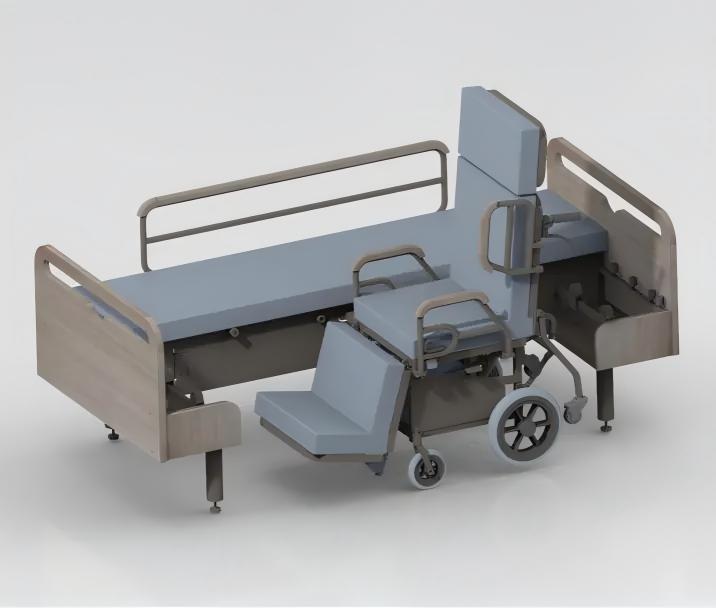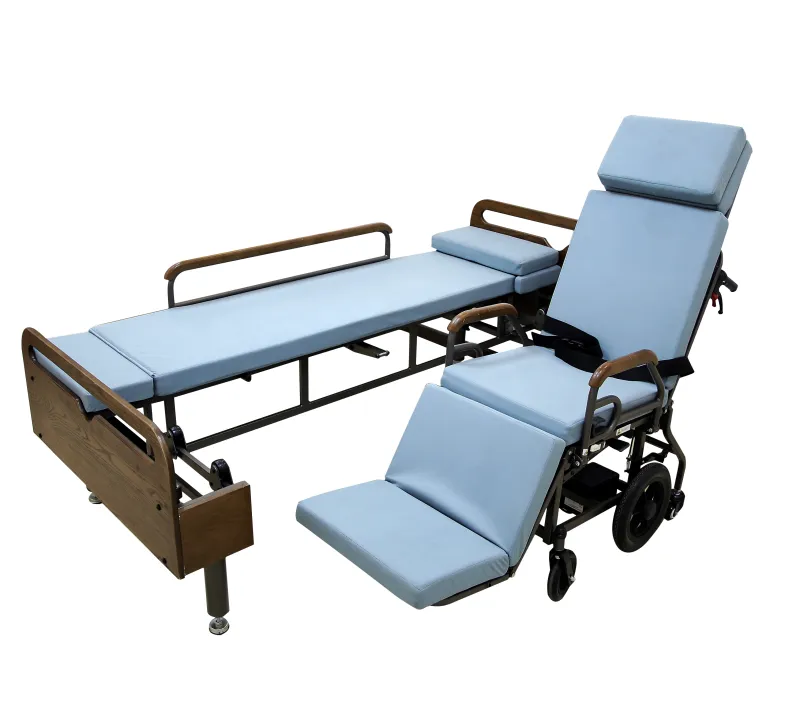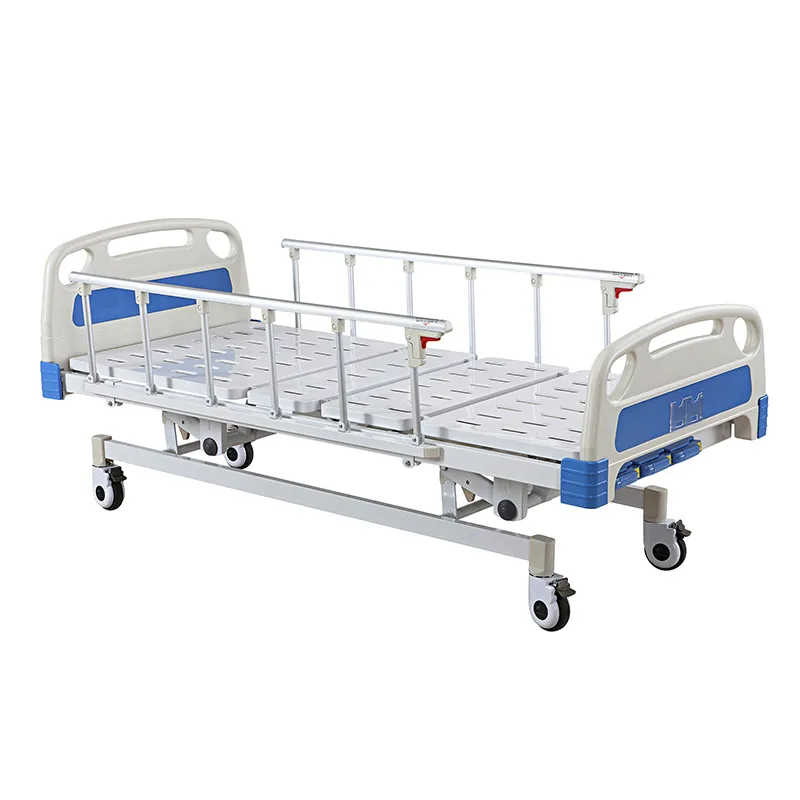
Como as camas hospitalares ajudam a tratar o diabetes?
2024-09-10 15:30
In modern healthcare environments, diabetes has become one of the most common chronic diseases in the world. According to the World Health Organization, the number of diabetics worldwide has reached hundreds of millions and continues to increase every year. Diabetes not only affects patients' daily lives, but also poses a serious threat to their overall health. For patients with diabetes, proper care and management are essential. In this process, hospital beds, as a key medical device, can provide patients with necessary support and help.
This article will explore in detail the various roles of hospital beds in diabetes treatment, from preventing complications to improving the quality of care, providing comprehensive help to patients.

What is a hospital bed?
A hospital bed is a special bed designed to meet the medical needs of patients. It has a variety of functions and features that can be adjusted according to the patient's physical condition. Compared with ordinary beds, hospital beds can adjust the height of the head and foot of the bed, adjust the angle of the bed, and even change the overall height of the bed. These features make hospital beds not only suitable for inpatients, but also widely used in home care, nursing homes and other long-term care environments.
The design of hospital beds focuses on comfort and practicality. For example, mattresses are usually made of special materials that can disperse pressure and reduce the risk of long-term bedridden patients developing pressure sores. Some hospital beds are also equipped with accessories such as electric adjustment systems, emergency call systems, and auxiliary armrests to ensure that patients get the maximum degree of safety and comfort during use.
Hospital beds help prevent diabetic bedsores
Diabetes patients are prone to skin ulcers and bedsores (pressure sores) due to poor blood circulation and nerve damage. Long-term bed rest can cause continuous compression of local skin, which in turn causes tissue necrosis and forms bedsores. For diabetic patients, bedsores not only affect the quality of life, but may also cause serious infections and even endanger their lives.
Hospital beds play an important role in preventing bedsores. First, hospital beds can reduce local pressure by allowing patients to change their positions regularly through the electric adjustment function. Second, the mattresses of hospital beds usually have a decompression design that can evenly disperse body weight and reduce pressure on bone protrusions. Some high-end hospital beds are also equipped with dynamic air mattresses, which automatically adjust the inflation state of the airbags and continuously change the support points to further reduce the risk of bedsores.
Hospital beds make diabetic wound care more manageable
Wound care is an extremely important part of diabetic patients, especially wounds on the lower limbs. Due to unstable blood sugar levels, diabetic patients' wounds heal more slowly and are more susceptible to infection. Therefore, how to manage wound care efficiently is a key issue in the treatment of diabetic patients.
Hospital beds facilitate wound care. First, hospital beds can adjust the height of the head and foot of the bed, allowing caregivers to more easily access the patient's wound site without repeatedly moving the patient, reducing discomfort during care. Second, the adjustment function of hospital beds can help patients maintain specific postures, such as raising the affected limb to reduce blood pooling and promote wound healing. In addition, hospital beds are usually equipped with mattresses and sheets that are easy to clean and disinfect to ensure that there will be no secondary infection during wound care.

Hospital beds make it easier for patients to move independently
During the treatment and recovery process of diabetic patients, maintaining a certain degree of independence is crucial for both mental health and the rehabilitation process. Hospital beds help patients achieve this goal through a variety of designs. First, hospital beds can be adjusted to the appropriate height, making it easier for patients to get in and out of bed and reduce the risk of falls. Secondly, the side rails and armrests of the bed provide support points for patients, helping them maintain balance when moving or turning over in bed.
In addition, the remote control adjustment function of the hospital bed is very practical for diabetic patients with limited mobility. Patients can adjust the height and angle of the bed by themselves through the remote control to find the most comfortable posture and reduce dependence on others. This not only improves the quality of life of patients, but also reduces the burden on caregivers.
Hospital beds can help diabetic patients get the rest they need
Sufficient rest is essential for the health management of diabetic patients. Good sleep can help stabilize blood sugar levels, reduce stress, and strengthen the immune system. The versatility of hospital beds provides patients with a better rest environment. First, the adjustment function of the hospital bed can help patients find the best sleeping posture and reduce sleep interruptions caused by discomfort or pain. Secondly, the mattress design of the hospital bed is ergonomic, which can effectively disperse the weight pressure, reduce the pressure on joints and muscles, and improve sleep quality.
In addition, for diabetic patients who need night care, the flexible adjustment function of the hospital bed can reduce the interference of the nursing process on sleep. For example, caregivers can easily adjust the height of the bed and conduct necessary inspections or treatments without disturbing the patient's sleep too much. These features allow patients with diabetes to get enough rest, which helps control their condition and restore their strength.

Summary
The importance of hospital beds in diabetes treatment cannot be ignored. By providing patients with multifunctional support, hospital beds not only play a key role in preventing complications, but also provide guarantees for wound care, independent movement and sleep quality. Diabetes is a complex chronic disease, and good care and management are key to maintaining patients' health and quality of life.
As a professional medical device, hospital beds can provide the support needed for patients with diabetes, helping them better cope with the challenges of the disease and improve their overall quality of life.








